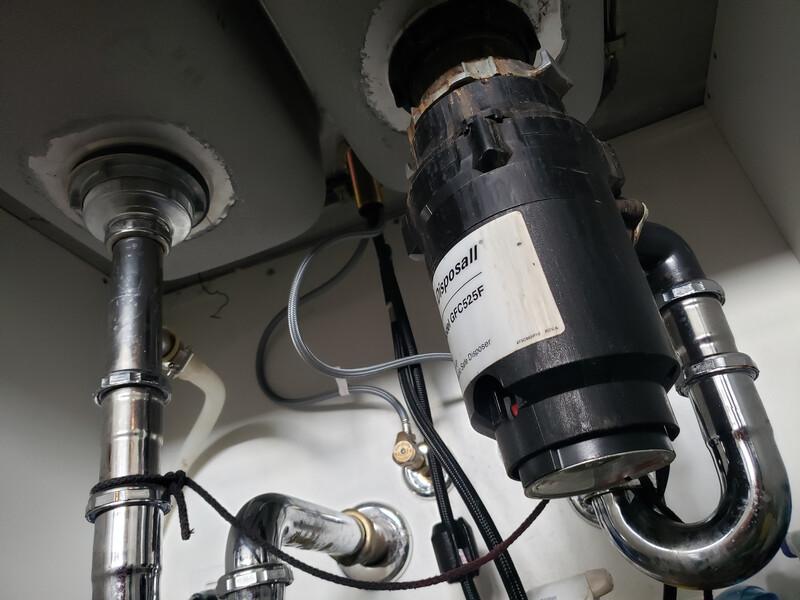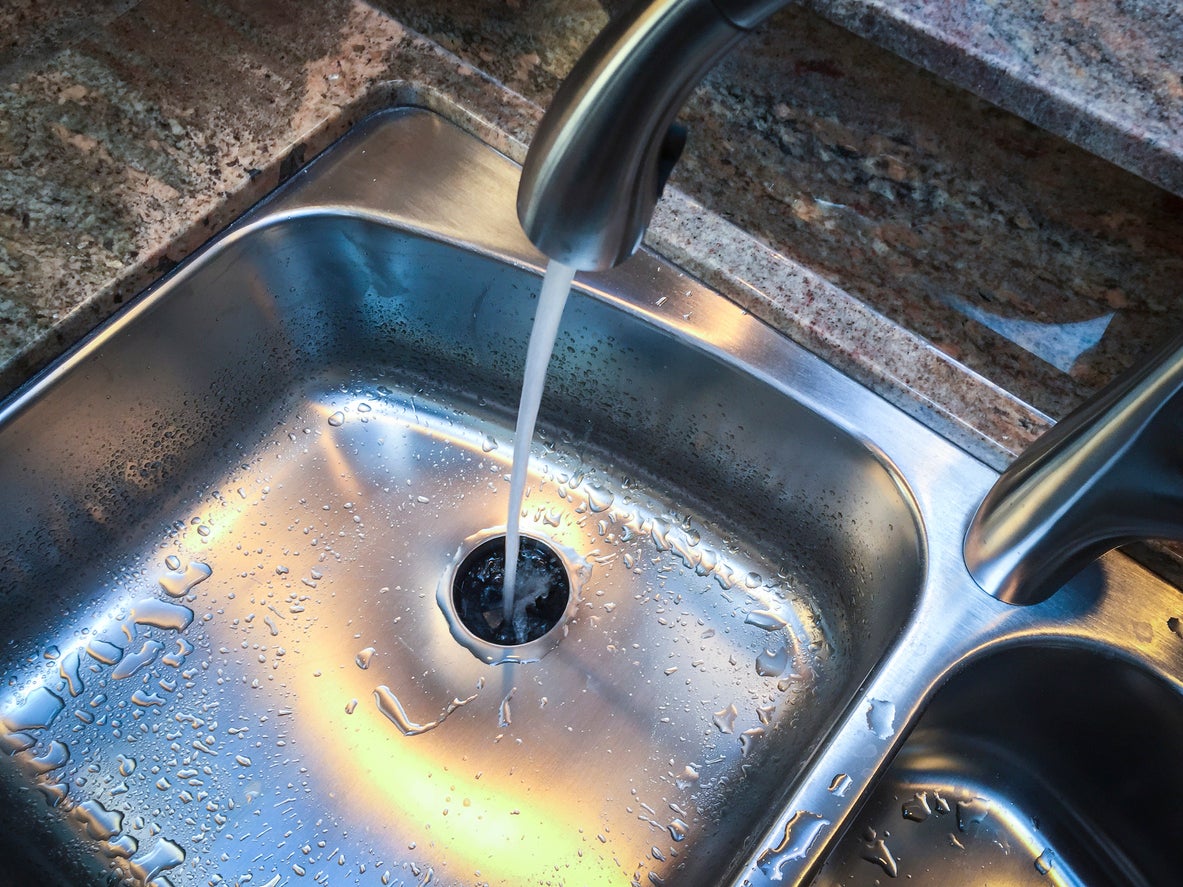Practical Techniques for Repairing a Dripping Garbage Disposal
Practical Techniques for Repairing a Dripping Garbage Disposal
Blog Article
We have found this great article about Garbage Disposal Leaking From Bottom down the page on the internet and believe it made perfect sense to discuss it with you over here.

Waste disposal unit are important kitchen appliances that assist in taking care of food waste successfully. However, a leaking waste disposal unit can be an irritating and untidy issue to handle. Fortunately, lots of leakages can be repaired easily with a few basic actions. In this post, we will go over just how to fix a leaking garbage disposal properly.
Introduction
Waste disposal unit are set up under kitchen sinks and are designed to shred food waste into smaller sized items, enabling it to go through the pipes system easily. While these devices are typically reliable, leaks can happen gradually because of deterioration, loosened links, or damage to the device.
Step-by-Step Overview to Fixing a Leaking Waste Disposal Unit
Turn Off the Power
Prior to attempting any kind of repairs, make certain that the power to the waste disposal unit system is switched off to avoid the risk of electrical shock.
Find the Leakage
Identify the precise location of the leak and identify the reason
Tighten Connections
Make use of a wrench to tighten up any kind of loose connections in between the disposal system and the plumbing system.
Replace Seals or Gaskets
If the leakage is due to worn seals or gaskets, eliminate the old elements and replace them with new ones.
Patching Splits or Holes
For fractures or openings in the disposal unit, usage epoxy or an appropriate patching material to secure the damaged area.
Determining the Resource of the Leakage
Prior to attempting to take care of a leaking garbage disposal, it is vital to recognize the source of the leakage. This can generally be done with aesthetic examination or by carrying out simple tests.
Visual Examination
Check the waste disposal unit system thoroughly for any kind of signs of water leakage. Pay attention to areas around seals, gaskets, and connection points.
Evaluating for Leaks
One means to test for leaks is by running water through the disposal device and looking for any noticeable signs of leakage.
Usual Causes of Leakages in Waste Disposals
Worn Seals and Gaskets
Seals and gaskets play an important function in preventing water from leaking out of the garbage disposal. Over time, these components can wear away, bring about leakages around the disposal device.
Loose Links
The links in between the waste disposal unit and the pipes system can come to be loosened gradually, creating water to leakage out during operation.
Cracks or Openings in the Disposal Device
Physical damage to the waste disposal unit, such as cracks or holes in the real estate, can additionally cause leakages.
Devices and Materials Needed for Dealing With a Leaking Garbage Disposal
Prior to starting the repair process, gather the required tools and materials, including a screwdriver, adjustable wrench, plumbing professional's putty, replacement seals or gaskets, and epoxy or patching product for fixing fractures or holes.
Evaluating the Garbage Disposal After Repair Work
As soon as the repair service is total, test the waste disposal unit by running water via it to guarantee that the leak has been fixed.
Preventive Upkeep Tips to Prevent Future Leaks
To prevent future leakages, it is important to do regular maintenance on your garbage disposal. This includes maintaining it tidy, preventing putting non-food things or difficult items down the disposal, and regularly looking for leakages or other problems.
Verdict
In conclusion, fixing a dripping waste disposal unit is a relatively simple process that can be completed with fundamental tools and materials. By adhering to the steps described in this post and exercising preventive upkeep, you can keep your garbage disposal in good working problem and stay clear of costly repairs in the future.
HERE’S HOW TO FIX YOUR GARBAGE DISPOSAL
WHAT TO DO IF SOMETHING IS STUCK IN YOUR GARBAGE DISPOSAL
If the impeller won’t turn, there’s probably something stuck in the disposal. It could be a steak bone or peach pit, although plumbers report pulling all sorts of inappropriate objects out of disposals, such as bottle caps or aluminum foil. Make sure power to the disposal is off, and look inside to see if you can see the source of the jam.
Never stick your fingers in a disposal. Pull out anything you see with tongs or pliers.
If the disposal still won’t work, it may be time to call a plumber or consider buying a new disposal. GEM Plumbing & Heating is here for all of your garbage disposal needs.
WHAT TO DO IF YOUR GARBAGE DISPOSAL DRAIN IS CLOGGED
Take everything out from underneath your sink and put a bucket or other container under your disposal to catch any water that drains out. Disconnect your disposal from the power supply. If it’s plugged into a wall outlet, unplug it. If it’s hardwired into an electrical box, go to the electrical panel and turn off the breaker for the disposal. Pour ¼ cup of baking soda into the drain, followed by ½ cup of white vinegar. Give the solution a few minutes to fizz and do its work. Look into the disposal with a flashlight to see if you can see an object that might be causing the clog. If you see it, remove it using tongs or pliers. MORE TIPS ON DEALING WITH A CLOGGED GARBAGE DISPOSAL
Never use drain cleaner in a garbage disposal. It can damage the plastic parts inside the disposal. You can also be splashed with the caustic liquid while working to clear the clog. Beware! Never stick your fingers into a garbage disposal. Trust us — not a good idea. In many instances, your dishwasher drains through your garbage disposal. This allows the disposal to grind any large food particles that may be drained out of your dishwasher. There are some jurisdictions, however, where the plumbing code prohibits such a connection. WHAT TO DO WHEN YOUR DISHWASHER DRAINS THROUGH THE DISPOSAL
Run some water in the sink so your plunger has at least a ½-inch of water to create a seal and plunge vigorously up and down several times. You may need to repeat this several times. Run hot water down the drain to clear any residue that remains.

We had been shown that write-up about Why Is from an associate on our other website. For those who enjoyed our article if you please be sure to share it. Thanks for going through it.
Click Report this page